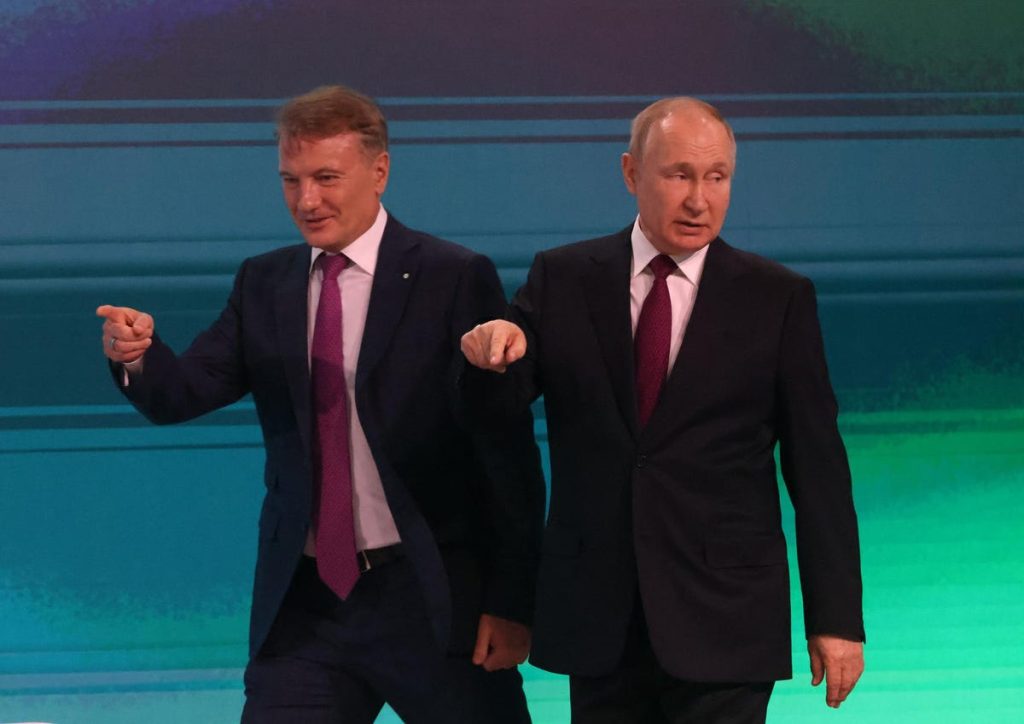This article was updated on April 4, 2023 to reflect some new developments from one of the people mentioned in this report — Boris Mints. Only text around Mints’ case was updated.
Sanctions were supposed to kill the Russian financial sector. It did, and it didn’t.
It did insofar as any globally ambitious Russian money center bank or asset manager had their expansion plans curtailed by sanctions. Doing business as a Westerner with a Moscow or St. Petersburgh-based bank is next to impossible now. Sanctions hurt.
“Because of the sanction environment, global banks, vendors, partners are extremely careful in dealing with Russia-based or connected counterparts, and always ask a lot of questions,” says Neri Tollardo, a former executive at Tinkoff Bank in Moscow, now living and working in Mexico as of mid-2022. “Banks do not process or accept payments in and out of Russia, and often times global counterparts have self-imposed compliance standards that are much stricter than the law,” he says.
So in this way, sanctions have hurt Russia’s financial institutions.
But a Russian banking crisis, one that looks like we have seen in the U.S. recently with Silicon Valley Bank and in Switzerland with Credit Suisse, has not occurred. There were never any runs on Russian banks. The ruble strengthened. And while most banks are protected by the state – led by Sberbank and VTB – the Russian Central Bank has spent much of the last decade working to clean up the financial system. This house cleaning, led by Central Bank president Elvira Nabiullina, which led to the closure of hundreds of private banks, is arguably why sanctions didn’t ruin Russian finance. Elvira had already taken the weak links out of the system. And there were many. For this reason, Russian banks have survived the West’s sanctions regime and stock market delistings better than anyone would have imagined. For a cynical Russian, watching Silicon Valley Bank and Credit Suisse burn down while their bankers are gainfully employed is like smirking before the camera lens in front of a burning building.
Since being banned from the portfolios of American investors (the VanEck Russia ETF is being liquidated), Sberbank and VTB Bank, the two biggies, have lost half their value on the Moscow Exchange.
VTB Bank is even worse.
Russian banks have seen worse times.
The most recent banking crisis took place in waves
waves
Many of them were given access to these banks when the state and provincial governments sold assets after the fall of the Soviet Union. They knew nothing about banking. They didn’t subscribe to anything like Basel II or the new Basel III accords on financial security, and they used the bank like a house casino; a personal ATM for Russia’s globe-trotting banksters.
Once busted, they moved to the usual spots, welcomed with open arms by the luxury real estate developers and real estate agents of London, New York, Miami, Dubai and Cyprus.
Some of the most well-known are Ilya Yurov, Sergei Belyaev and Nikolai Fetisov, all former co-owners of Russia’s Bank Trust that had to be rescued by the state in 2014 due to fraudulent actions and terrible risk management. Yurov lives in London. It is unclear where the other two are living.
In 2020, the High Court in London ordered them to pay the Russian government-owned bank $900 million, but the ruling has not been implemented yet.
Silicon Valley Bank, Signature Bank
SBNY
Pre-sanctions, Boris Mints is another example of a Russian banker who managed a fragile Russian financial sector. He lives in self-exile in London, claiming political asylum after his bank, Otkritie, one of Russia’s largest private lenders, was taken over by Elvira Nabiullina due to a severe liquidity crisis. Mints is not sanctioned by anyone.
Earlier this year, a High Court in London ruled that Mints’s case to pay a $850 million in a fraud lawsuit from the now government-run Otkritie Bank was allowed to continue. But they gave him the right to appeal. His lawyers confirmed in early April that he would indeed appeal.
The judgment (in full here) only pertains to an attempt to stay proceedings, meaning he still had a chance to avoid the payment. The reason Mints sought to stay proceedings was that it was argued that any continuation of the case would become a legal proceeding that had the potential to furnish money to the sanctioned Russian government
Beyond those examples, had the sanctions come at the time when the Russian Central Bank was cleaning up its “zombie banks” – all hell would have broken loose. But seeing how much of that mess was swept away prior to the 2022 sanctions regimes taking hold, Russia’s banks remain safe and sound, even if Russian investors in those banks have lost their shirt.
The sanctions policy, the hardest ever taken out on Russia, is 13 months old. New ones pop up regularly. It is unclear what can possibly be next, as Russia’s financial institutions have already been largely cut off from the Western system.
Banks like VTB, which had an investment banking arm and an asset manager in Europe, with offices in London, will now be hard-pressed to help European firms do bond issues or stock offerings. They were once industry leaders in this, especially in smaller European Union states like Czech Republic. VTB Bank’s offices in London have been closed since last March as its assets were frozen in February. It was put into court ordered receivership in December.
Russia’s financial sector, and its banks at home, aren’t making headlines like banks in the U.S. and Europe are. They have withstood the onslaught of sanctions. But the picture is not pretty. It all depends on the angle. They’ve lost talent, as Tinkoff Bank executive Neri Tollardo says and serves as an example. They’ve lost their European and U.S. assets, which will not be recovered for years to come, if ever.
Sberbank’s most recent earnings reports in Russia showed a massive 78% collapse in profits due to all these asset seizures and lost business, Reuters reported on March 9.
Sberbank CEO Herman Gref said in press reports that Sberbank is “the most attacked entity” in the country, which experiences “unprecedented challenges in terms of complexity and power.” He said Sberbank lost nearly all of its assets abroad, leading to massive write-downs.
Yet, Russian president Vladimir Putin smirks at the burning buildings of Credit Suisse and the lost $200 billion in Silicon Valley Bank deposits, needing unprecedented FDIC support to protect account holders. The bank is now insolvent. His biggest banks remain. But only because most of Russia’s banks over the years have been folded and rendered insolvent, and a danger to the Russian financial system.
“Thanks to the professional actions of our banking community, government agencies, and the efforts of the central bank, I want to emphasize that we managed to overcome all these (sanctions) difficulties in general,” Putin reportedly said in Moscow earlier this month after meeting with Sberbank’s CEO. He said that Sberbank’s current stable position was “a good signal for the whole economy.”
With sanctions expected to remain for a long time to come, will Russia’s heavily sanctioned banks fold one day, too?
“Who knows what will happen in Russia, because we all only know what we read in the press and what we read in the press is that Russia did a smart job handling their banks pre-sanctions and so after sanctions they have managed okay,” says famous commodities investor Jim Rogers from his home in Singapore. Rogers was a director of Russian fertilizer company PhosAgro. He says he has some money still trapped in Russia. “We saw the ruble go down when sanctions were first imposed, then it went up. So in that case alone, the market tells me that somebody in Russia did something right,” he says.
Read the full article here
















